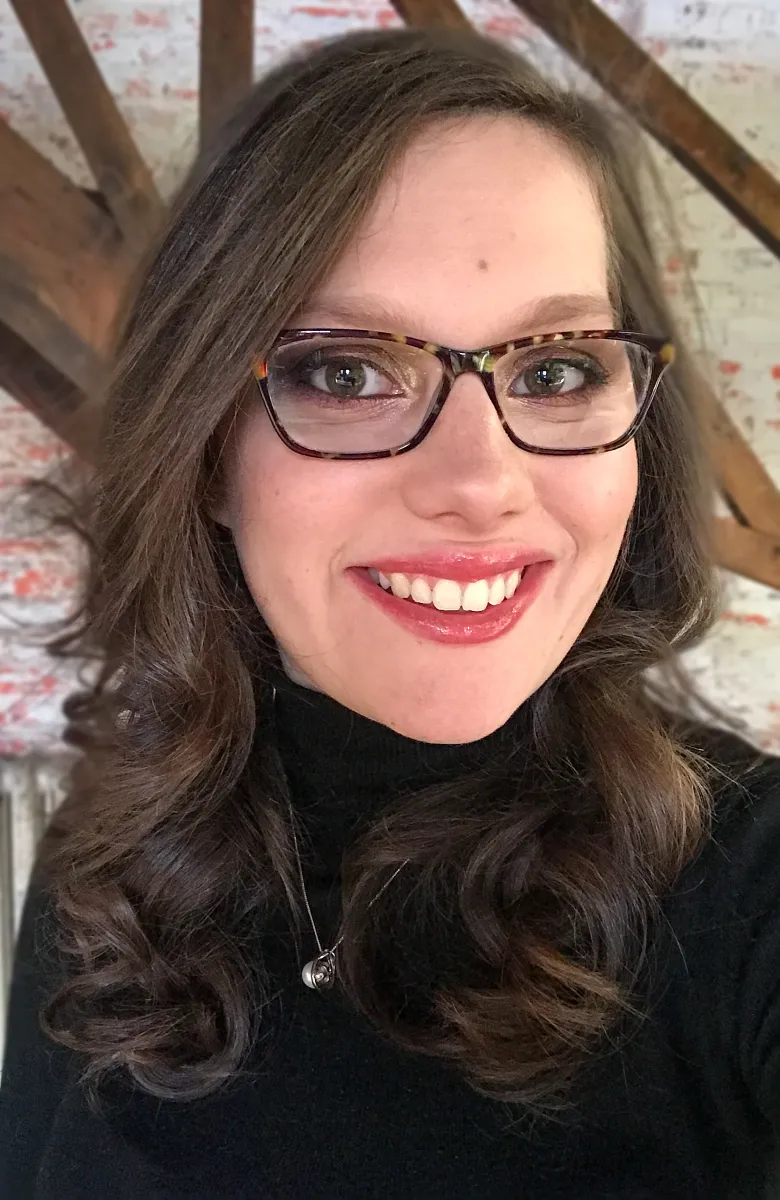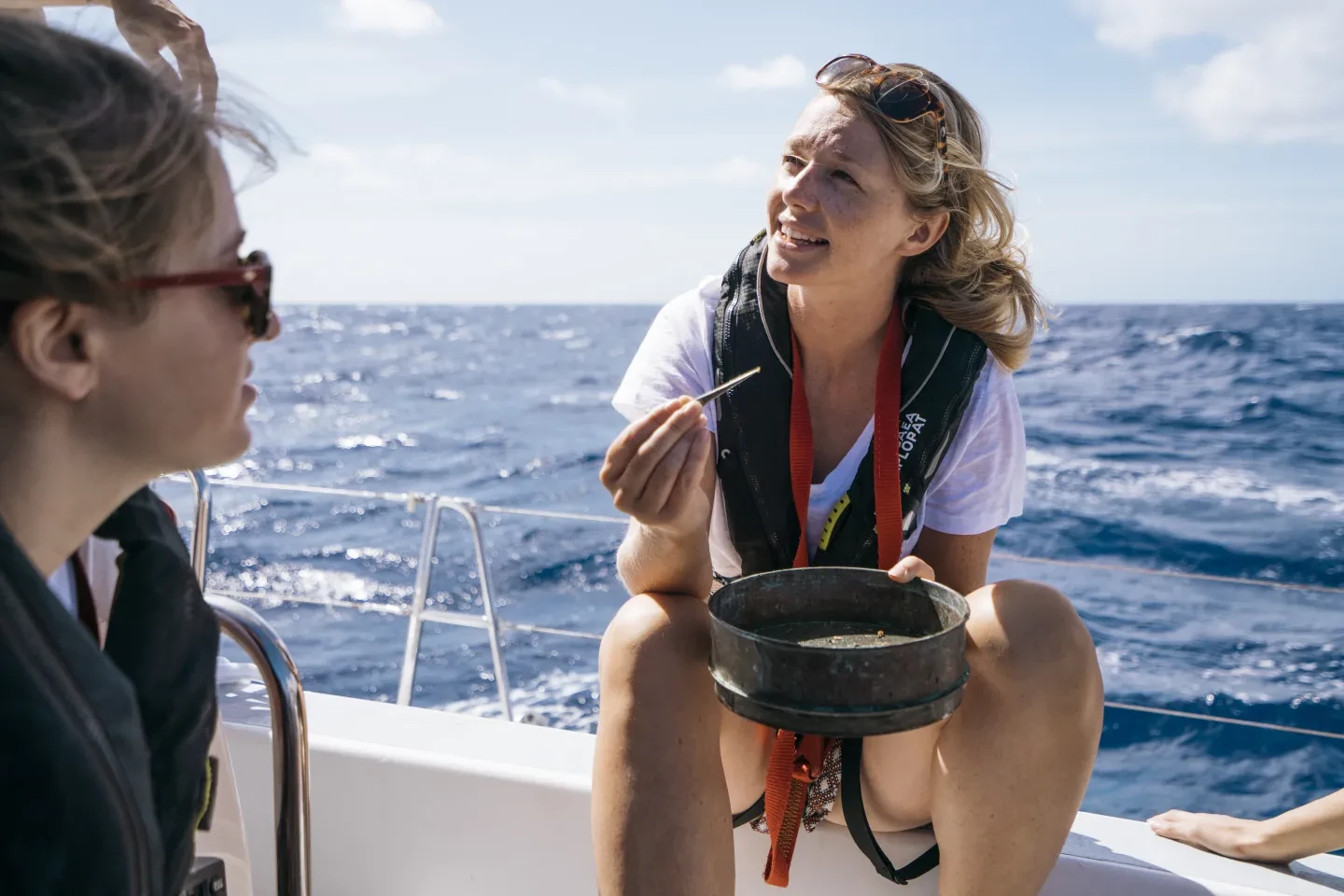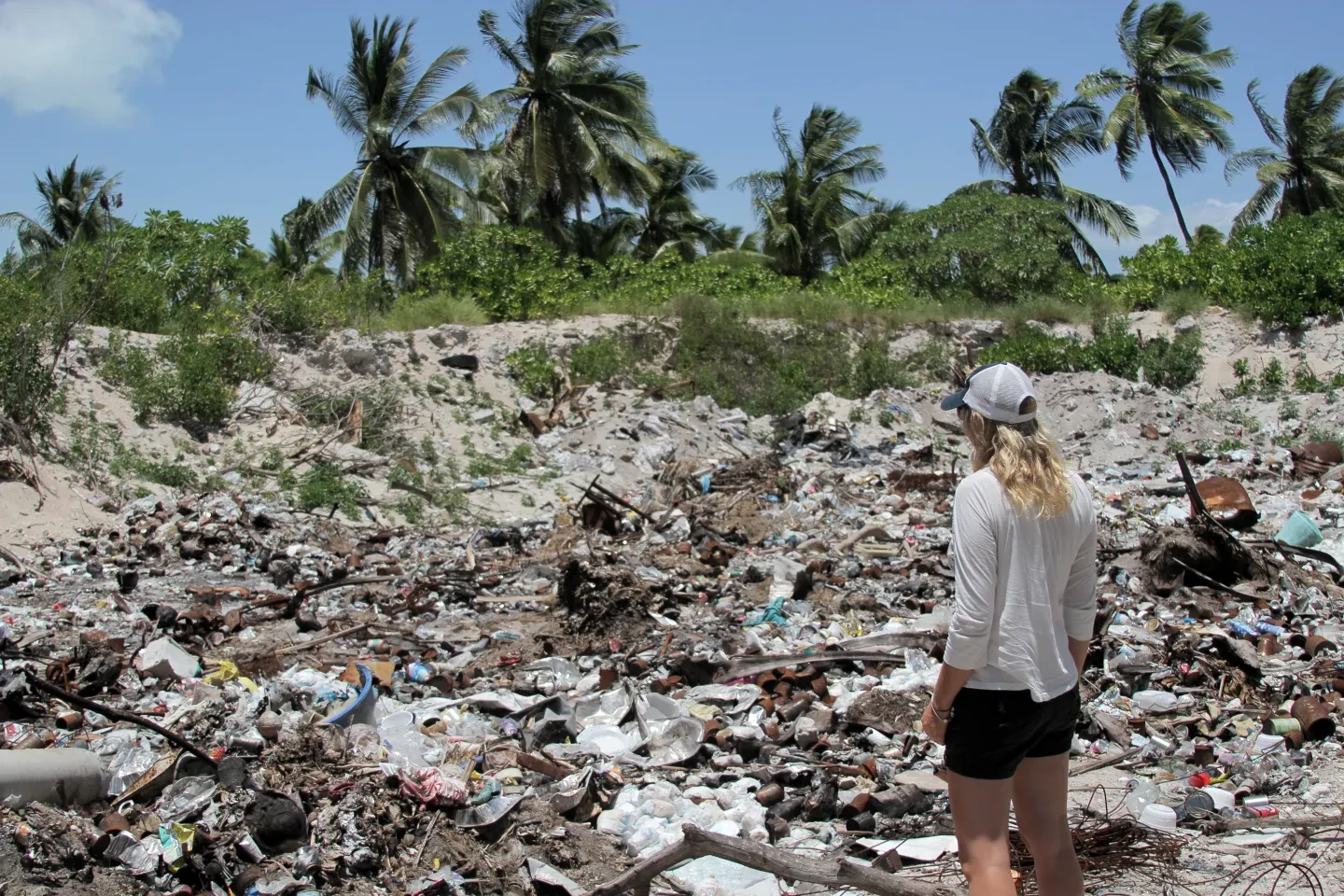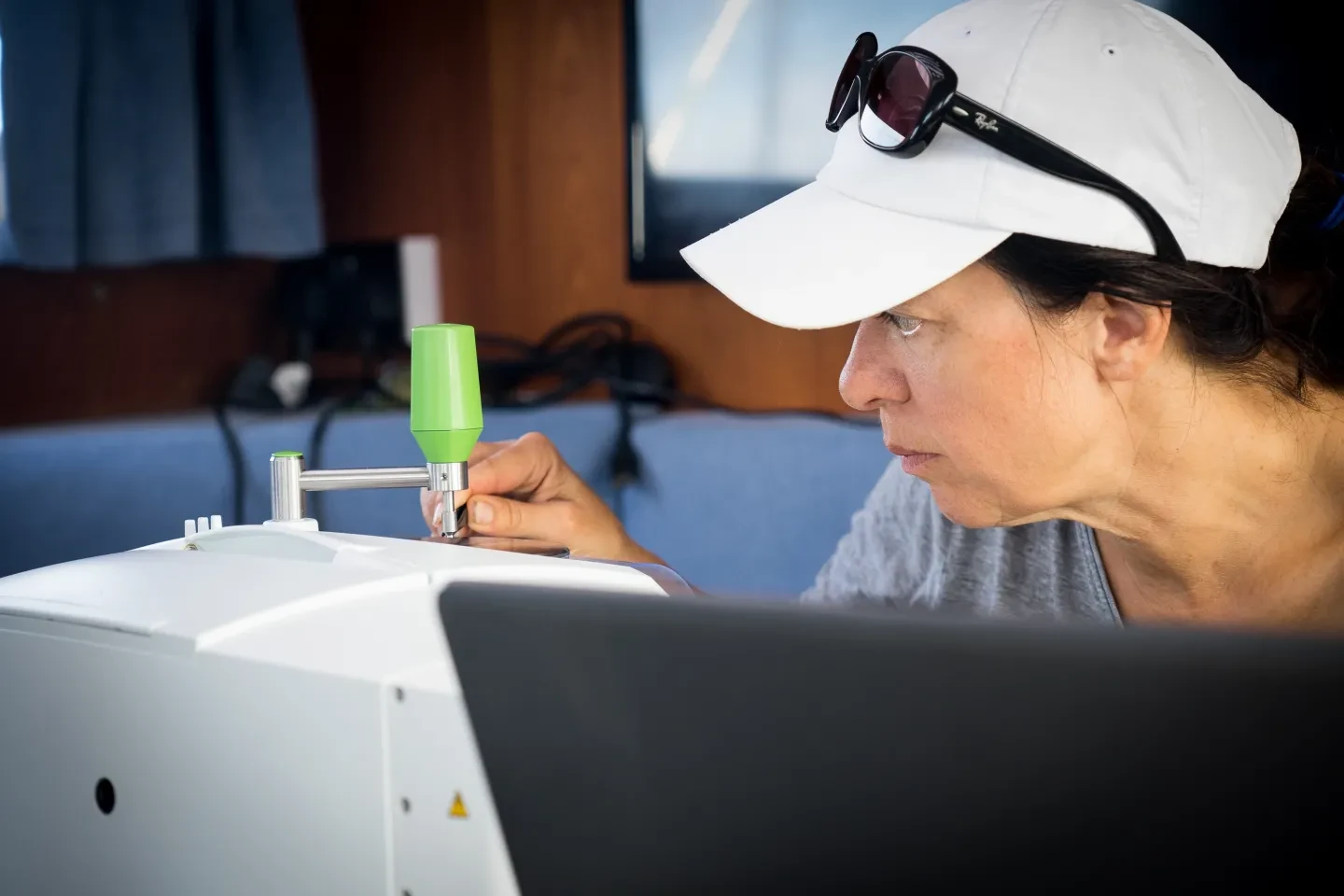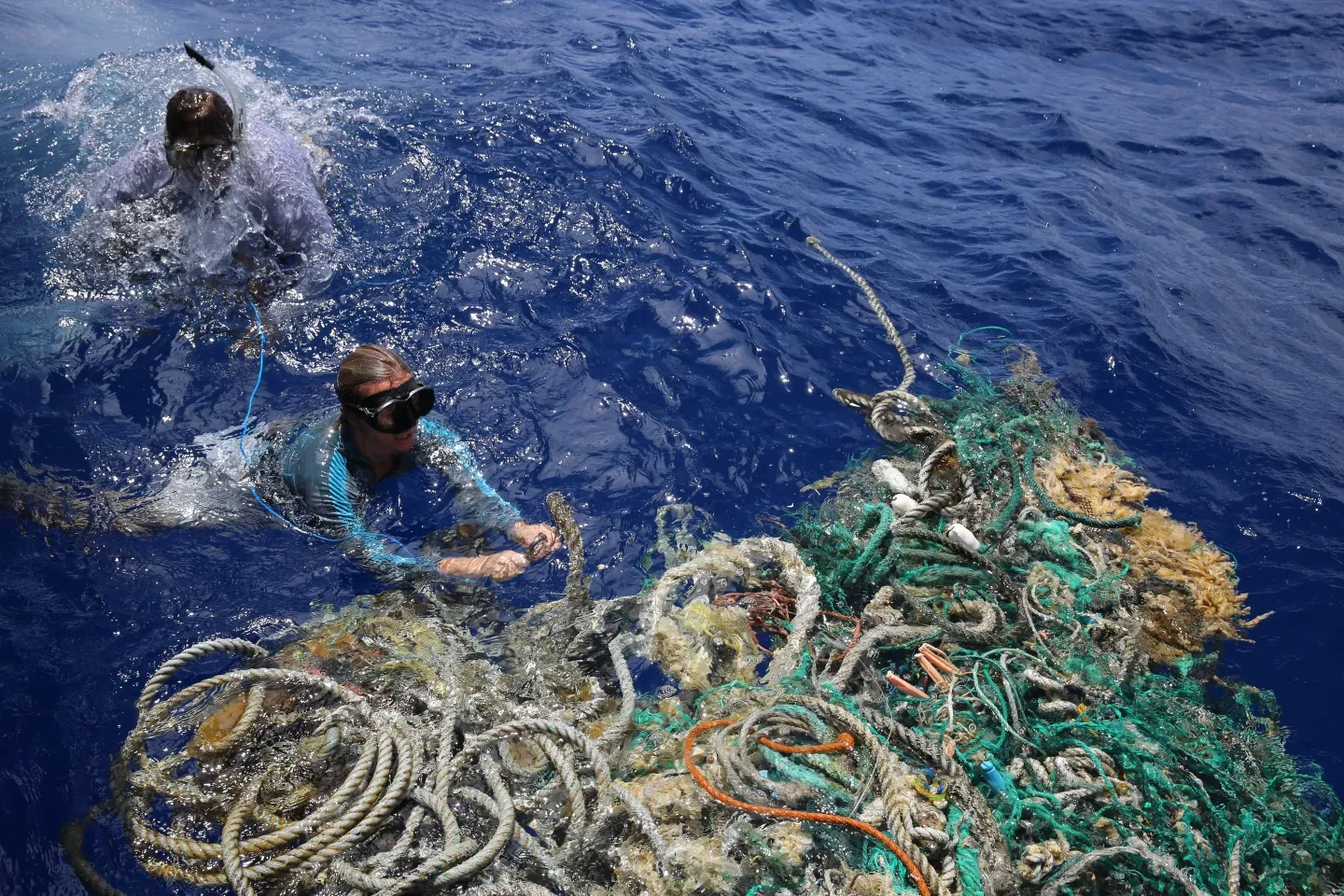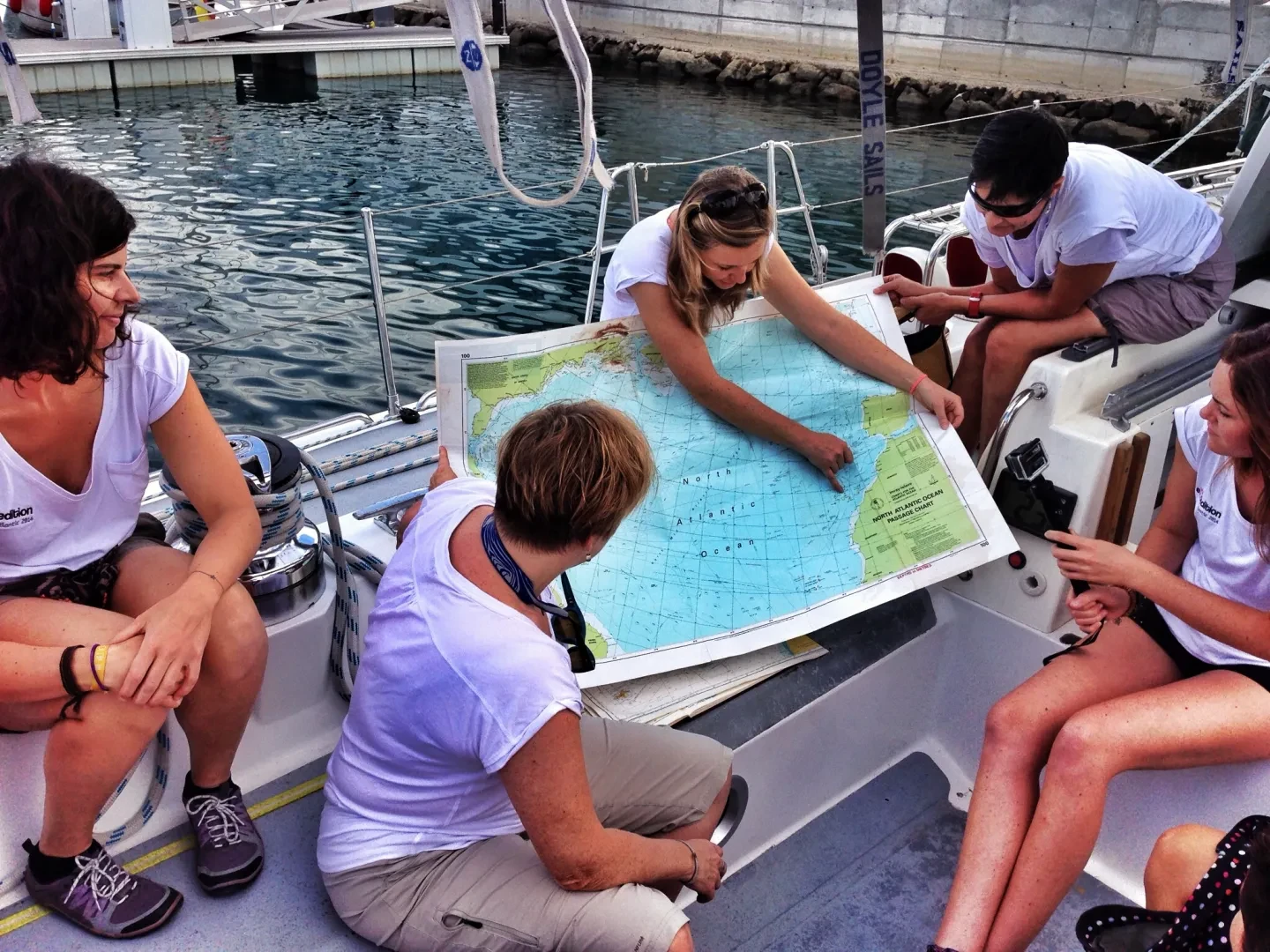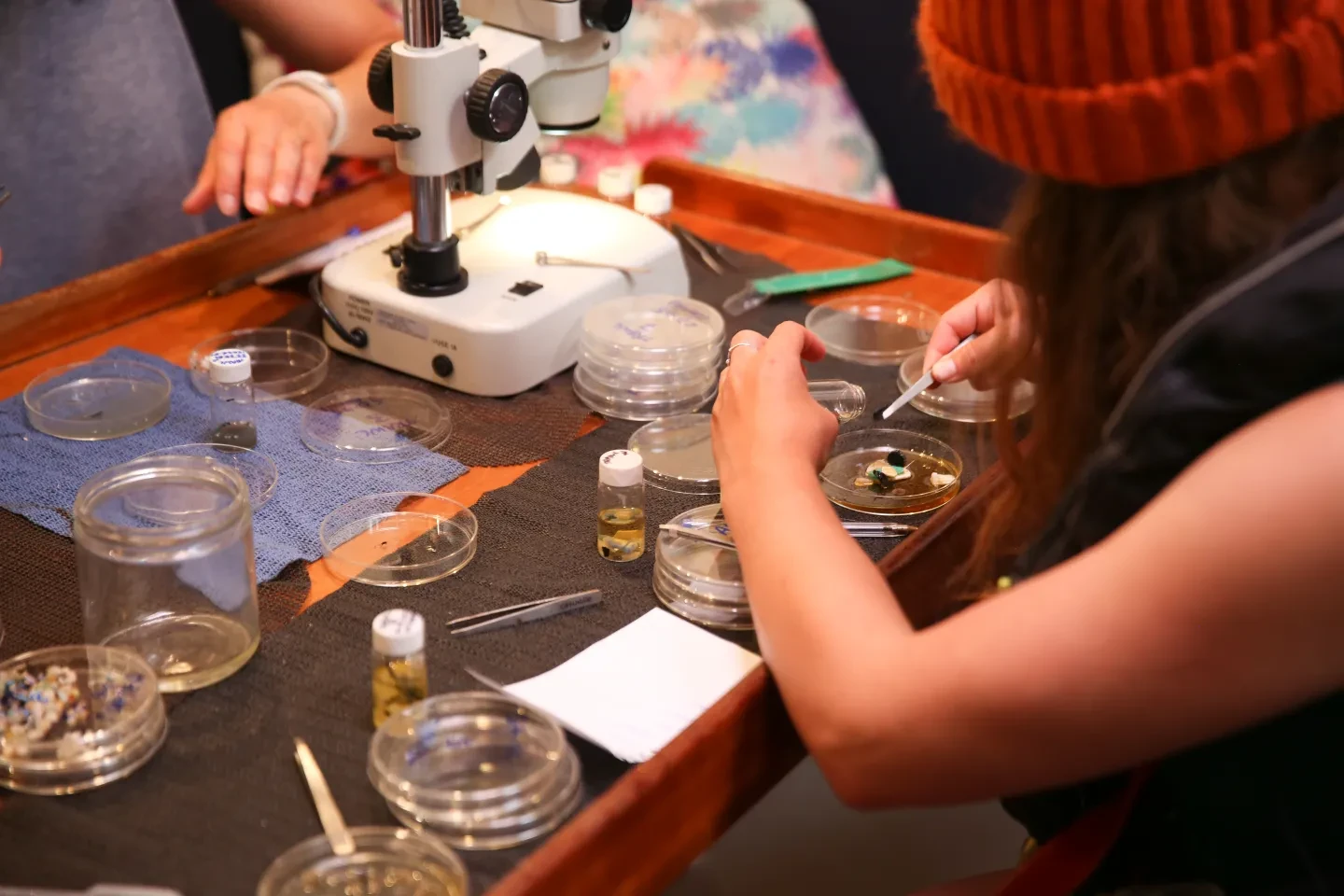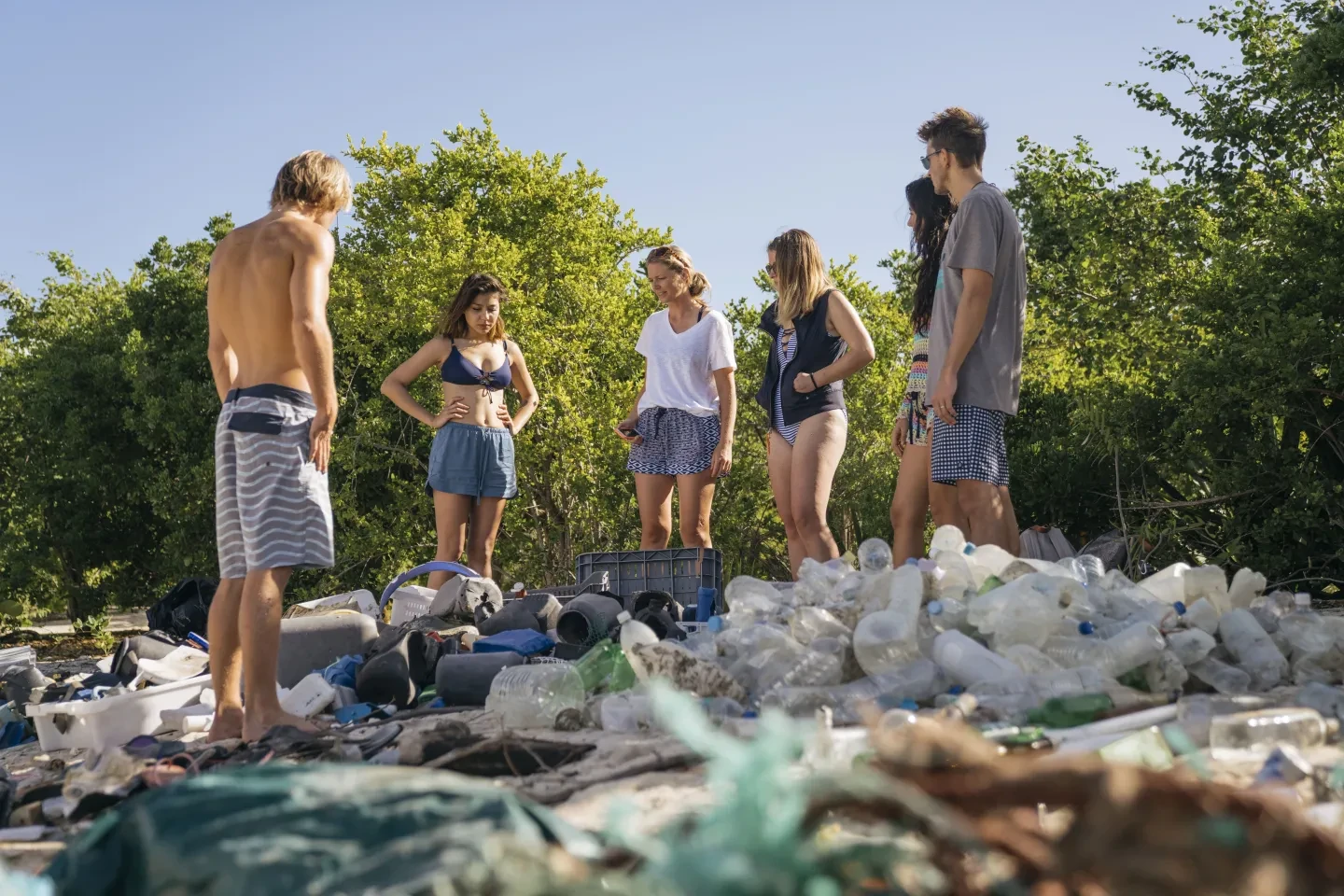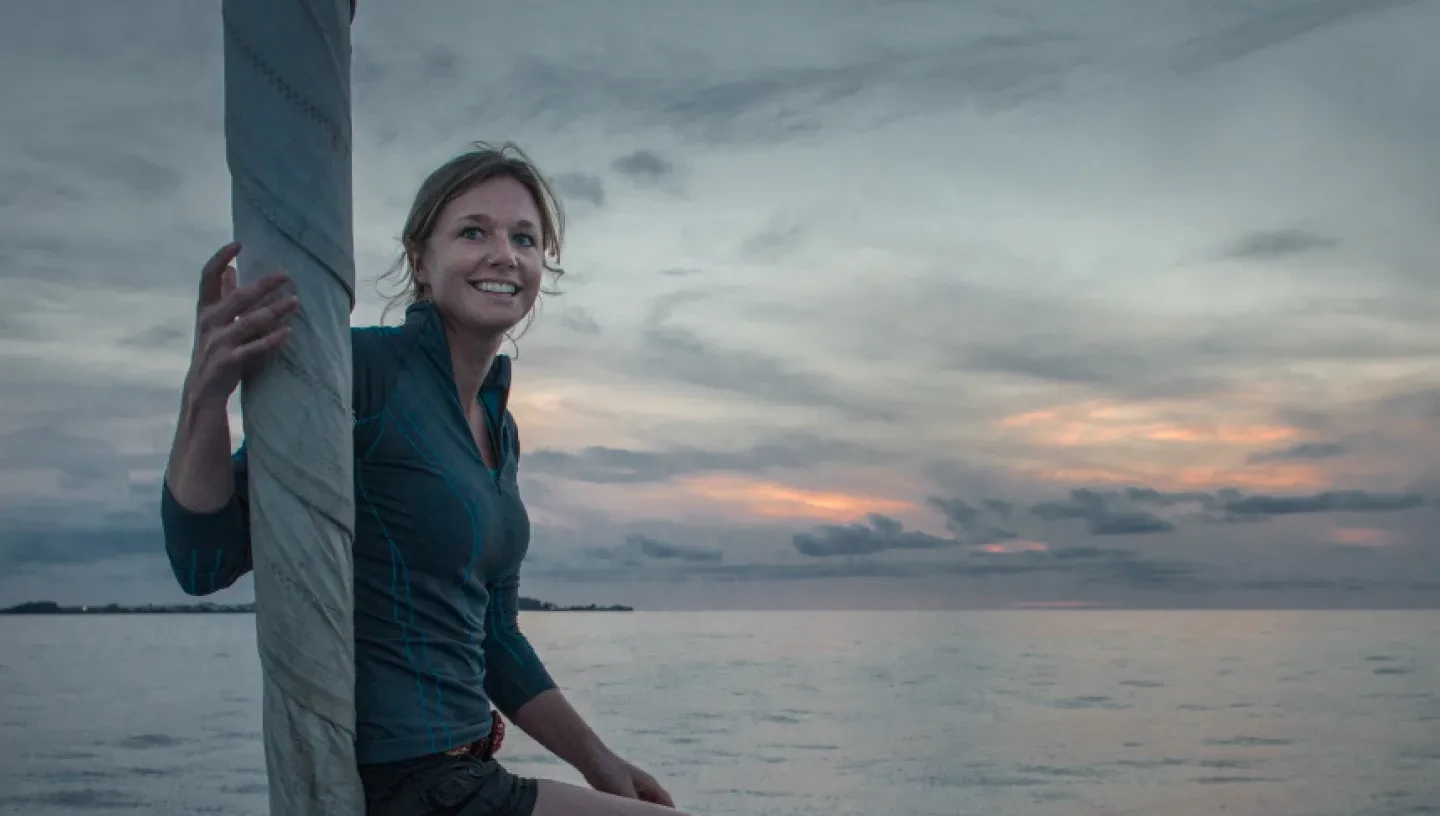
From an early age, skipper and environmentalist Emily Penn felt a connection to the ocean.
But while sailing to Australia, she started to see plastic in remote areas of the Pacific Ocean and islands.
Her experiences led her to found eXXpedition: all-women voyages that support scientific research missions into marine plastic pollution.
From clean-up operations to microplastics data collection, Emily's pioneering work has seen her receive a British Empire Medal in 2021 and the Royal Yachting Association’s Yachtmaster and Seamaster of the Year awards.
She tells us about her voyages, what it’s like to work thousands of miles away from land, and why she’s optimistic about the resilience of the ocean.
When did your passion for ocean advocacy begin?
After completing my architecture degree, I lined up a job in Australia as an architect. I didn’t want to take an aeroplane, so I decided to hitchhike and ended up working on a biofuel boat called Earthrace.
As we journeyed across the Pacific Ocean, I started to see plastic in the water. Then, one morning, I was going for a wash over the side of the boat when I saw a toothbrush floating by. At this point, we were 800 miles from land – the closest people to us were on the International Space Station – and I was shocked to see something that’s normally in your home in the middle of the ocean.
How did eXXpedition start?
Travelling to Australia was what I call my ‘shift moment’; it made me realise that we need to do something about ocean plastic.
This began with community clean-ups: I spent six months on a tiny Tongan island and organised the largest ever community-led waste collection. Then I embarked on research expeditions. I sailed out to gyres – these large accumulation zones where plastic ends up – to see first hand what was happening.
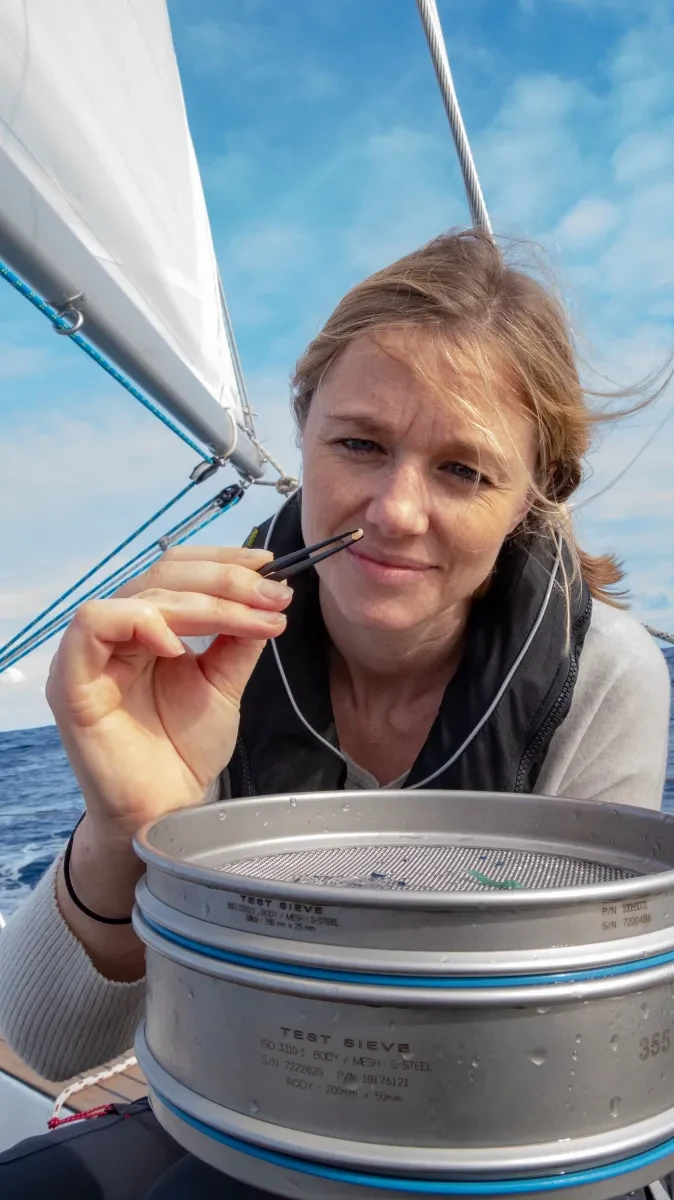
Here we discovered that fish had little bits of plastic in their stomach. I began to realise that most of the plastic at sea is not in great rafts floating around on the surface: it breaks down into little fragments the size of your fingernail, known as microplastics.
That’s when I started to ask questions about plastics in the food chain and its impact on human health. I decided to skip to the end of the food chain and test which chemicals I had in my body. I worked with the United Nations to look for 35 chemicals in my blood that are banned because they’re toxic. We found 29.
Some of these chemicals are carcinogens, but a lot of them are endocrine disruptors: they mimic our hormones and stop important chemical messages moving around our bodies. This is bad news during pregnancy, as we pass all these chemicals on to our children in the womb and when we breastfeed.
That’s when I realised it’s a female-centred issue, and wanted to tackle it with an amazing team of women. In 2014, I founded eXXpedition: all-women voyages that include sailing to different parts of the world to understand more about plastic and toxic pollution.
What are some of the research projects you’ve undertaken?
On our voyages we conduct scientific research in partnership with universities, such as the University of Plymouth. We do a range of sampling, from looking at what’s happening on the surface – which is where a lot of buoyant plastic ends up – to what’s sinking to the seabed in coastal regions.
During our Round the World mission, we used a 73-foot sailing vessel called TravelEdge, which we repurposed for scientific experiments. We take samples back on board and use a FTIR machine (Fourier transform infrared spectroscopy) to work out the polymers of the plastic we’re looking at. This helps to indicate what it might have been when it was on land.
We also look at the water column and drop down Niskin bottles (a cylindrical collection device with stoppers at each end) to capture a snapshot of water at depth. Plastic is not only on the surface: it’s often becoming coated in algae and biofouling and then sinking. While we do some analysis on board, we send samples back to laboratories for detailed examination, which will inform scientific research papers.
As well as universities, we’ve also worked with other partners including NASA. On one of our expeditions, we took a satellite tracker and tagged it to a huge ball of debris that was too big and heavy to carry back to land. NASA then tracked where the ball of debris was, and then a big ship went out and picked it up.
It’s not just the ocean: we look at the particles that are suspended in the air and also see what’s happening on land, from the policies that are in place to areas that are being mismanaged. It’s very thorough, looking at all different aspects! Ultimately, we’re trying to build a holistic picture of what’s going on and find out where this plastic is coming from, so we can stop it.
What's life like on board?
Our voyages are made up of an array of women who come from all different backgrounds and expertise, such as journalists, filmmakers, teachers and policy makers: all the people that we need to tackle ocean plastic. We have 14 women on board each expedition, including three professional sailors and a scientist.
It’s always busy in the lead up to an expedition, from organising the scientific and filming equipment to obtaining permissions and permits to do the sampling. It’s quite a relief when you cast off the mooring lines, your phone stops working and you can get into the rhythm of the mission.
Out at sea, there’s lots going on, including sailing the boat and managing scientific experiments to collect and analyse samples. A lot of time is spent discussing marine plastic pollution and mapping out solutions. We try to tailor an action plan for each of us, depending on our skills, our background and the opportunities we have on land to create change.
On top of this, we undertake daily chores to keep the boat going. We come together to cook, which is often an international culinary experience. Practicalities restrict us somewhat, so most meals are vegetarian: either rice, pasta, stews or casseroles as they don’t require many pots.
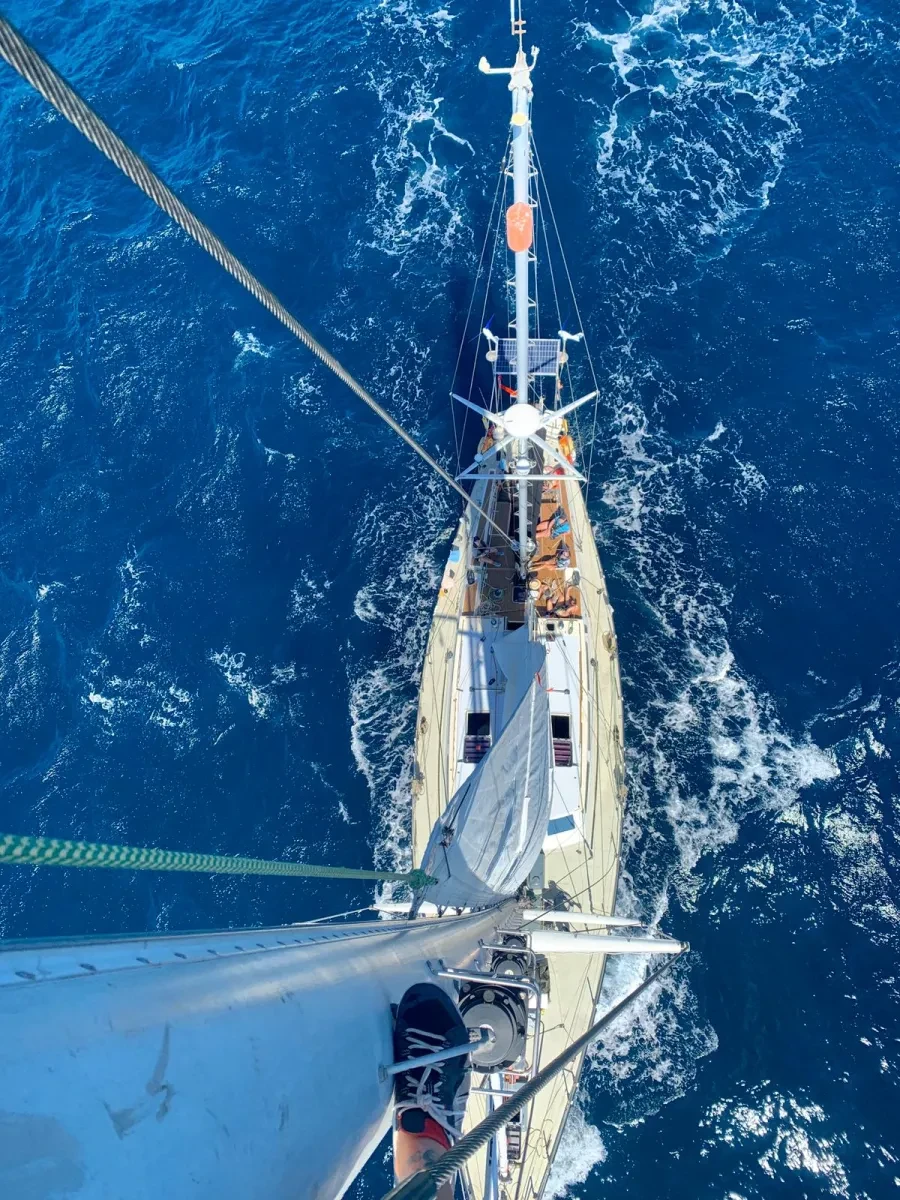
What have been some of your memorable moments?
Early on, my most memorable moments were to do with wildlife: magical encounters with hundreds of dolphins at the bow of the vessel, or humpback whales swimming up to us in Tonga.
As time has passed, my favourite memories are more about the human interactions: the people I’ve met along the way and their relentless drive and passion for the planet.
Of course, hearing the stories of the women on board our voyages is especially inspiring. A big part of eXXpedition’s mission is being able to shine the spotlight on incredible women. There are so many different women who need to be lifted up so the world can see the extraordinary jobs they’re doing, and their efforts to forge a new path for girls and generations to follow.
It's also incredible to see their confidence grow as the voyage progresses. On the first day, the women look at the vessel, thinking, “How can I ever do this?” But by the end of the mission, they’re standing at the helm of our 73-foot yacht, surging through the ocean.
Being at sea is an intense bonding experience, particularly when we experience gruelling days and sea sickness. We all embark on these voyages for the same reason, and it creates friendships that last for a lifetime.
With a problem as complex as marine plastic pollution, what are some of the solutions you’re looking into?
When you go out on the ocean and see plastic first hand, you realise there’s not one source of pollution. Every little piece has a different story to tell about where it’s come from, so the solutions are varied.
To solve the issue, you have to be a project manager. You need to learn about the science to understand what’s going on. You need to raise awareness and engage everybody to play a role, including governments, businesses and communities. My background in architecture has taught me to think like a problem solver, pulling different elements together to bring them to life.
While the problem may seem overwhelming, there are so many things we can do. During the pandemic, we built an online platform called SHiFT, which outlines some of the ways we can solve ocean plastic pollution.
These include things we can implement in our daily lives: for example, using biodegradable wet wipes and shopping at zero waste shops.
We also offer ideas for those seeking to take industry action, from introducing taxes for companies creating plastic waste to getting your organisation listed as a B Corporation – a certification that measures a company’s social and environmental performance.
The great thing is that there are lots of steps we can take: we don’t need everyone to do everything. We just need everyone to do something. There’s something everyone can do that fits their passion.
Are you optimistic that we can save our oceans?
At the moment, I’m optimistic about the future of our ocean. I think our ocean has the most incredible ability to bounce back. It’s very resilient, but only if we take the pressure off: if we stop the pollution, fishing and all these destructive methods that we use for taking resources.
However, it can be hard not to feel despondent about the state of the ocean, especially when you see a creature like an albatross swooping down to grab something on the surface, and you think, “That was probably a piece of plastic.” That’s hard to watch: knowing it’s happening in front of your eyes, and in that moment, there’s nothing you can do.
We can’t save the albatross that’s now flown off, but we can take our samples and findings back to land and change how we operate to stop this worsening crisis.
While we’re all contributing to the problem of marine plastic pollution, we also all have it in our power to reverse it. We need to let the ocean recover and it will – I really feel it will – but I hope we don’t leave it too late.
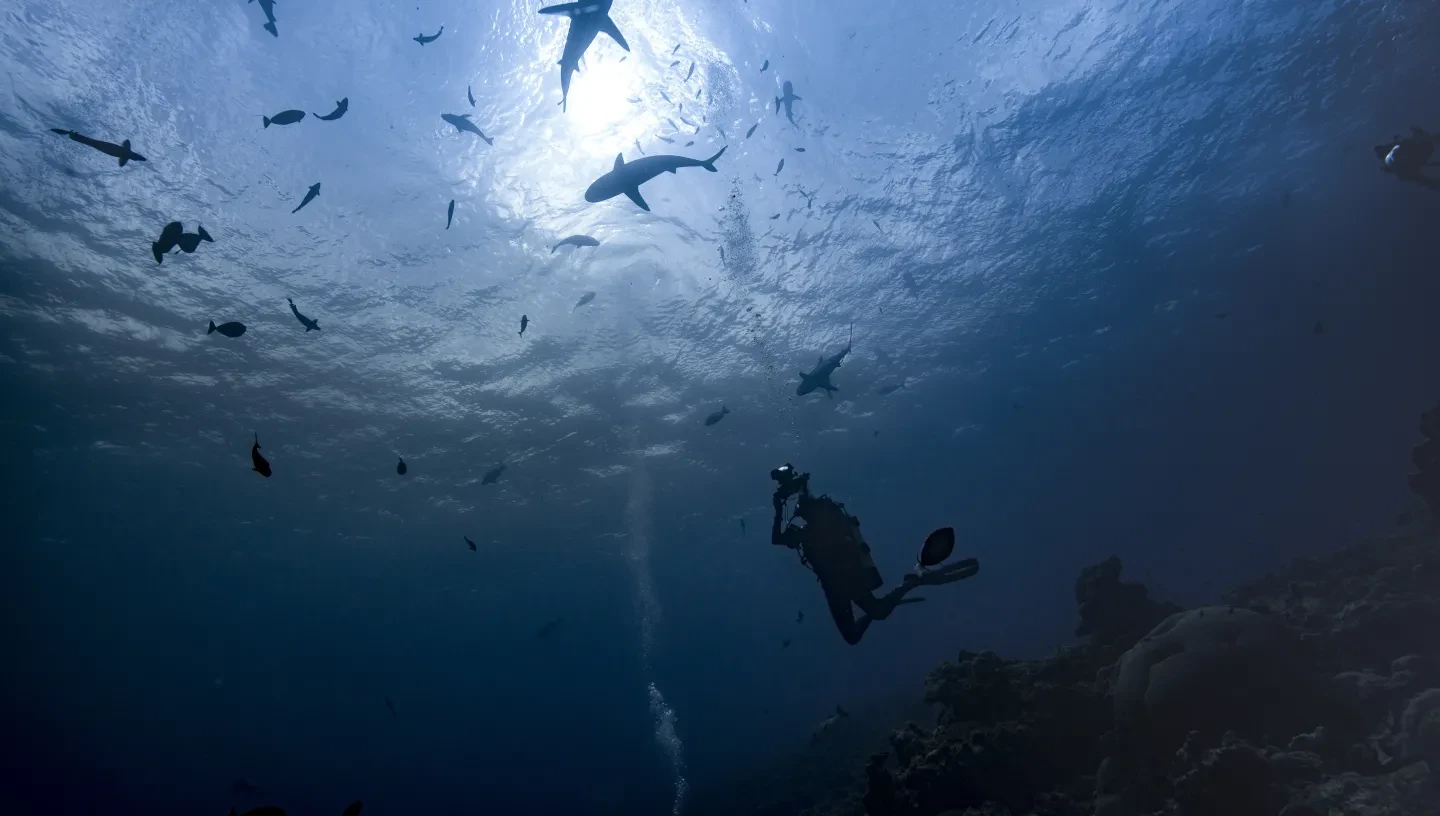
Making Waves
As told to Elizabeth Oliver, Digital Content Producer at Royal Museums Greenwich
Main image courtesy of Emmanuel Lubezki
